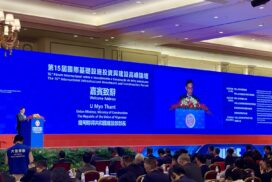The surge in solar and wind energy generation in 2023 marked a pivotal shift in the global energy landscape, with renewable sources accounting for 30.3 per cent of the world’s electricity generation. This significant milestone underscores the potential to triple renewable energy generation by 2030.
Solar energy, in particular, saw a remarkable increase of 29.4 per cent from 2022 to 2023. Developing and underdeveloped countries are increasingly relying on solar and wind power to meet their energy needs. Notably, China is a major player, generating more than half of the world’s renewable energy.
The world is currently facing a myriad of natural disasters due to the impacts of global warming, alongside geopolitical tensions, armed conflicts, and the instability of oil and natural gas prices. These crises have underscored the urgent need for a stable and sustainable energy supply, providing an opportunity to escalate the use of renewable energy. At COP 28 in Dubai, delegates from over 100 countries committed to tripling renewable energy generation by 2030, reflecting a global resolve to transition to cleaner energy sources.
From 2009 to 2019, renewable energy grew at an average annual rate of about five per cent. By 2021, wind and solar power accounted for 10 per cent of the world’s total electricity generation. The increase to 30 per cent in 2023 is a testament to the rapid advancements and widespread adoption of renewable technologies. However, climate change poses significant challenges, such as reduced hydropower generation in some regions, which has led to an increased reliance on coal.
Despite the high initial costs, renewable energy projects, including those for hydropower, solar, and wind power, offer substantial long-term benefits. They significantly reduce pollution and decrease dependency on fossil fuels, contributing to a more sustainable and environmentally friendly energy landscape. Countries around the world are increasingly adopting renewable energy projects as an effective strategy to mitigate climate change.
Renewable energy is the best drive to reduce pollution and tackle the pressing challenges of global warming, geopolitical instability, and fluctuating fossil fuel markets. The commitment to expanding renewable energy capacity, as evidenced by the pledges made at COP 28, sets a promising trajectory towards a sustainable and resilient energy future. With continued innovation and investment, the goal of tripling renewable energy generation by 2030 is achievable, paving the way for a cleaner and greener world. As such, more use of renewable energy is the best way to cure the ailing world, which is encountering an influx of dangerous catastrophes.
Renewable energy is the best drive to reduce pollution and tackle the pressing challenges of global warming, geopolitical instability, and fluctuating fossil fuel markets. The commitment to expanding renewable energy capacity, as evidenced by the pledges made at COP 28, sets a promising trajectory towards a sustainable and resilient energy future. With continued innovation and investment, the goal of tripling renewable energy generation by 2030 is achievable, paving the way for a cleaner and greener world. As such, more use of renewable energy is the best way to cure the ailing world, which is encountering an influx of dangerous catastrophes.















